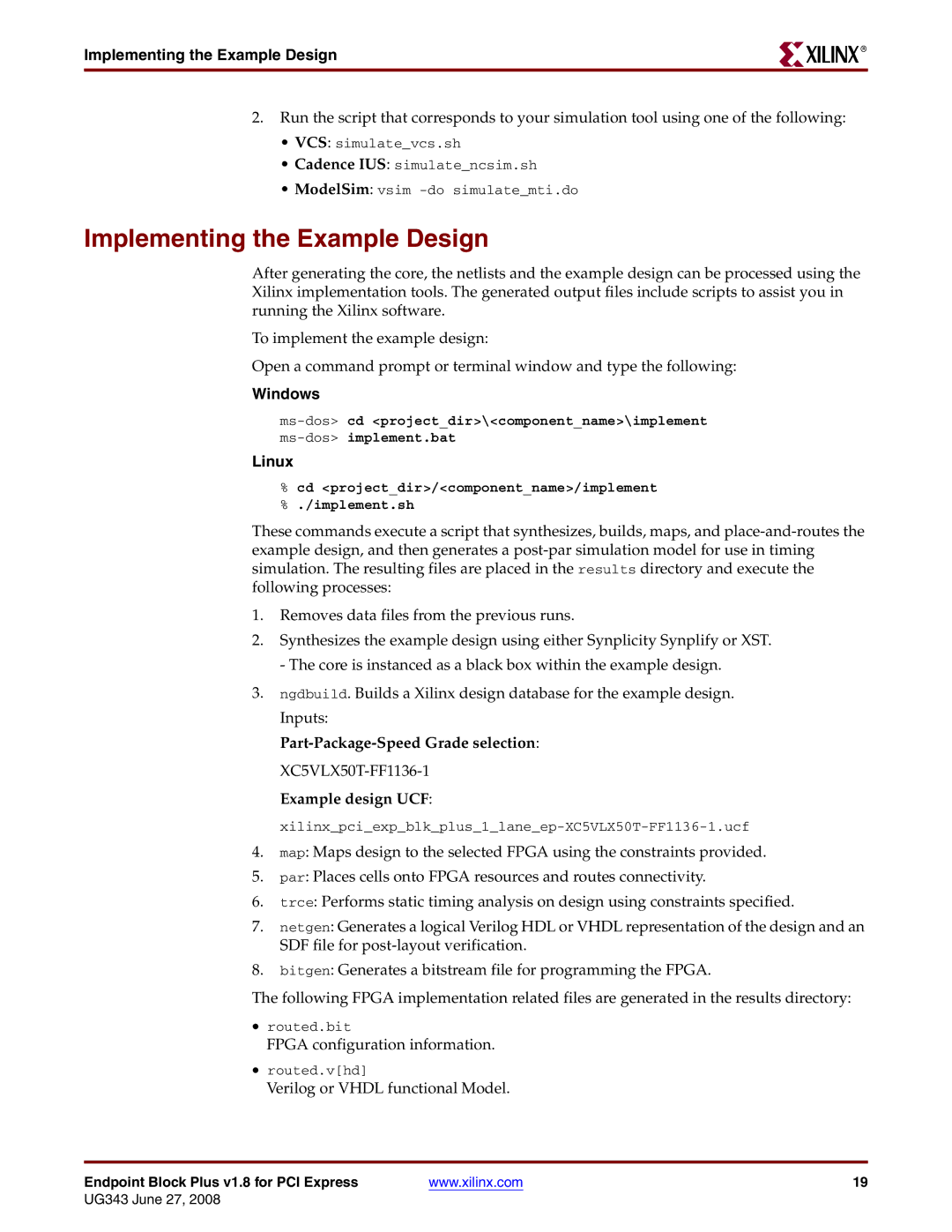
Implementing the Example Design
R
2.Run the script that corresponds to your simulation tool using one of the following:
•VCS: simulate_vcs.sh
•Cadence IUS: simulate_ncsim.sh
•ModelSim: vsim
Implementing the Example Design
After generating the core, the netlists and the example design can be processed using the Xilinx implementation tools. The generated output files include scripts to assist you in running the Xilinx software.
To implement the example design:
Open a command prompt or terminal window and type the following:
Windows
Linux
%cd <project_dir>/<component_name>/implement
%./implement.sh
These commands execute a script that synthesizes, builds, maps, and
1.Removes data files from the previous runs.
2.Synthesizes the example design using either Synplicity Synplify or XST. - The core is instanced as a black box within the example design.
3.ngdbuild. Builds a Xilinx design database for the example design. Inputs:
Example design UCF:
4.map: Maps design to the selected FPGA using the constraints provided.
5.par: Places cells onto FPGA resources and routes connectivity.
6.trce: Performs static timing analysis on design using constraints specified.
7.netgen: Generates a logical Verilog HDL or VHDL representation of the design and an SDF file for
8.bitgen: Generates a bitstream file for programming the FPGA.
The following FPGA implementation related files are generated in the results directory:
•routed.bit
FPGA configuration information.
•routed.v[hd]
Verilog or VHDL functional Model.
Endpoint Block Plus v1.8 for PCI Express | www.xilinx.com | 19 |
UG343 June 27, 2008
